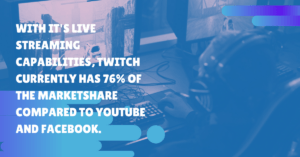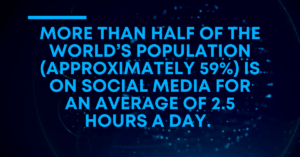What Is Affiliate Influencer Marketing?
Anyone who has been on a social media platform or a website in the last few years has encountered an influencer or affiliate marketer. Whether it’s an endorsement for a new piece of jewelry, a raving review of a new mattress, or an unboxing of a new subscription box, this person might be someone you know personally or a celebrity.
This type of marketing is highly effective, both for the advertiser and for the influencer. Social proof is typically more effective than a company’s professionally-written advertising copy, and when combined with the endorsement of a likable person, the combination is dynamic.
For brands to better understand affiliate influencer marketing, it’s necessary first to understand each component individually.
Influencer marketing is “a digital marketing tactic where you partner with influential figures with a large following and a strong reputation on social media, like Instagram or YouTube – think bloggers, celebrities – to promote your products within the content they regularly publish.” This strategy depends on potential customers seeing the posts and making the decision to buy.
On the other hand, affiliate marketing is a strategy where your company provides a unique link to track sales and other metrics and rewards the affiliate marketer (the people who share the link) with a commission or portion of the revenue generated.
So, affiliate influencer marketing uses a combination of both of these marketing strategies together. You are essentially pairing individual influencers who are already committed to promoting your brand with affiliate links to drive leads and sales for your product or service.
How affiliate marketing used to work
The world of affiliate marketing and affiliate networks, in general, have changed dramatically over the last few years but its history actually goes back even further than that. “In 1890, Nancy Green was hired by R.T. Davis Milling Company to be the face of their pancake mix called “Aunt Jemima.”
Many consider this campaign one of the first examples of “influence marketing,” although social media wouldn’t come to be for another 120 years. In a more current sense, affiliate marketing used to work in a reasonably straightforward way. Essentially, any content creators could sign up to promote a brand or product and receive a customized link to share in their blog posts (again, before the actual takeoff of social media).
Companies like Amazon made this process easy for people like bloggers and potential customers. When clicked, these links generated a small commission for the affiliates. There was virtually no brand loyalty, and most bloggers were quick to add links to anything and everything they could. While basic in form, this was the beginning of the affiliate network model.
How Affiliate Influencer Marketing Works
Affiliate marketing works because it capitalizes on the notion that 38% of shoppers relied on influencer reviews when online shopping and that 30% said they’re open to hearing from influencers several times per day.
For brands, the process works by creating customized and trackable links used to monitor metrics like average order value, sales volume, and site traffic. Then, when the influencer or content creator shares the affiliate link on their social media channels or website, and a user clicks the link or makes a purchase, that influencer receives “credit” for the transaction.
The details of how much companies pay affiliate marketers, which metrics are measured and used as goals, and the frequency of posting are all decisions left up to the brand. Consumers tend to know and trust the content creators, allowing them to promote the product or service authentically, which in turn builds even more trust.
However, this method isn’t foolproof and does come with challenges. Outside of those who click the affiliate link, it can be challenging to measure the success of a particular campaign. Brands often rely on comments, shares, likes, and new followers to measure brand awareness and make assumptions based on timing and engagement.
Like any marketing strategy, there are always options. For instance, using a Pay-Per-Click (PPC) campaign is sometimes popular with companies that want more control over their target audience and more precise measurement of goals. Results in a PPC campaign are easier to track and budget. However, they are also often more competitive.
Another consideration with affiliate influencer marketing is around disclosure. The Federal Trade Commission requires influencers to disclose sponsored posts and offers clear guidelines on how and when the influencer should offer the disclosure.
There’s no evidence to suggest that influencer disclosures negatively impact the influencer, the brand, or the campaign. On the contrary, consumers may trust both the influencer and the brand more based on their transparency.
How To Build an Affiliate Influencer Marketing Program
For companies that wish to build an affiliate influencer marketing program and grow brand awareness and lead generation, a bit of prework can result in a more successful program and long-term relationship with influencers who have a dynamic and engaging social media presence.
It’s helpful first to determine what brands a potential influencer already represents before you reach out. For instance, if you’ve been eyeing that celebrity on Instagram, you know already loves and uses your product, but they represent a competitor, it’s probably best to steer clear and look for another alternative.
For brands with physical products and access to the manufacturing and production process, co-branding a product with an influencer is an excellent opportunity to showcase a new product and use affiliate influencing at the same time.
This co-branding strategy involves the influencer from the very beginning of the processing, creating buy-in and infusing their style into the product. This type of partnership is often successful since both parties have a vested interest in the success, and the influencer becomes the primary advertiser of the product.
Another factor in the success of affiliate influencer marketing is the brand’s willingness to help create the collateral that influencers can use across their channels. For example, it can be daunting for some influencers to create enough consistent content on their social media platforms or blog posts. By assisting in this area, the brand can ensure the quality of the content, as well.
Finally, building a successful influencer marketing campaign requires the company to financially compensate the influencer in a competitive market. This compensation can be in the form of monetary payment, products or services, or a combination of both.
It’s also helpful if a brand is willing to give the influencer an exclusive rate for being an affiliate. This type of commitment can create a more trustworthy and long-term relationship and help in retaining successful influencers.
How Do Affiliate Programs Benefit Influencers
The most apparent benefit to affiliate marketers who run affiliate marketing programs is the opportunity to earn unlimited income. While it’s impossible to predict how much money an influencer will make in what has become a lucrative business for today’s social media influencers, affiliate income is an attractive option for anyone seeking to make a living outside the confines of a 9-5 office job.
Affiliate marketing programs also offer affiliates flexibility in how they structure their days and spend their working hours. For some with childcare needs or other commitments that restrict them from working specific hours, influencer work fits nicely in the margins of their routine.
And because many influencers thrive on being online and engaging with fans and followers, the affiliate marketing content drives them to keep posting and continue sharing valuable content that keeps them relevant.
How Do Affiliate Programs Benefit Brands
Unlike traditional advertising and marketing campaigns, affiliate programs are extremely easy to track and grow while also offering a high return on investment. For instance, if companies were to pay $5,000 for a television commercial, there’s no guarantee that the advertising spot would generate enough revenue to break even, let alone make a profit.
On the other hand, affiliate marketing works so well because it pays out on the backend of the sale. So, if the affiliate marketer’s links do not generate sales, there is no cost to the company, which can be seen in real-time, allowing the company to make adjustments.
Affiliate programs also allow for a more targeted approach in reaching an ideal audience. For example, instead of paying for social media ads and hoping the right users see them, a brand can strategically choose an influencer whose target audience closely aligns with the company’s ideal customer.
Along the same lines, the influencer is also motivated to promote the brand consistently. “The fact that they also earn encourages them to increase their own marketing efforts to promote your products and offer you advertising space on their website.”
How To Get Started With Affiliate Influencer Marketing
The process of finding the right influencer or affiliate marketer with a robust social media presence for your brand can be daunting and time-consuming. And, without adequate resources, it can be challenging to know how a particular influencer’s social media platform will perform in a marketing campaign for your company.
If your brand is interested in creating an affiliate influencer marketing program, or an entire affiliate marketing network, Sideqik’s discovery process makes it easy to understand all of the components and identify the right partners to help you grow your brand.
Nancy Rothman
Latest posts by Nancy Rothman (see all)
- How Travel Brands Can Use Influencer Marketing to Stay Afloat as the Pandemic Continues - February 22, 2022
- Influencer Marketing Trends to Watch (And Prepare For) in 2022 - December 31, 2021
- A Guide: How to Recruit the Right Influencers for Your Brand - December 30, 2021







